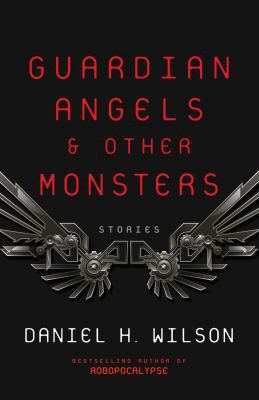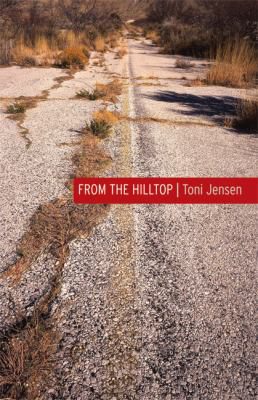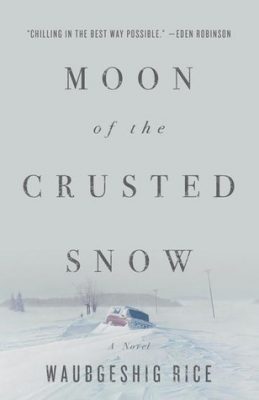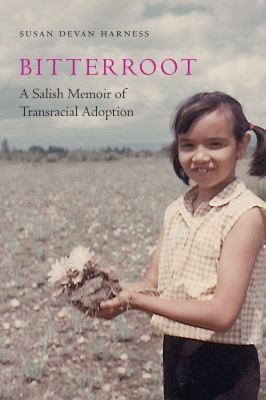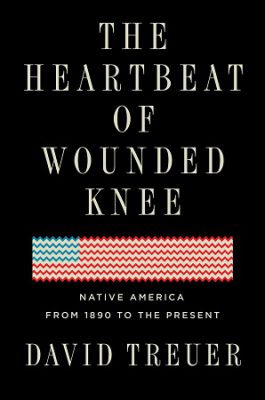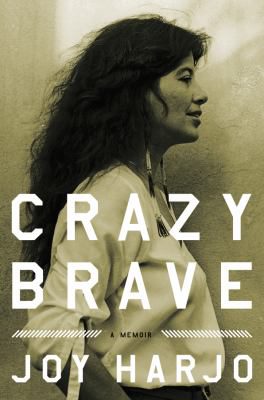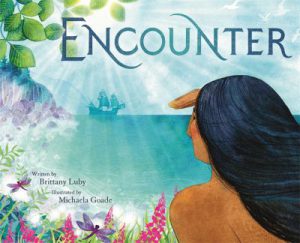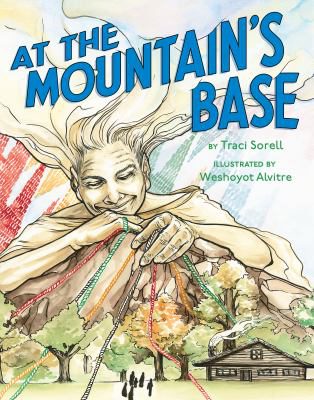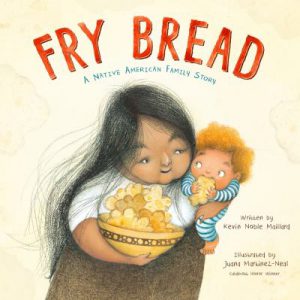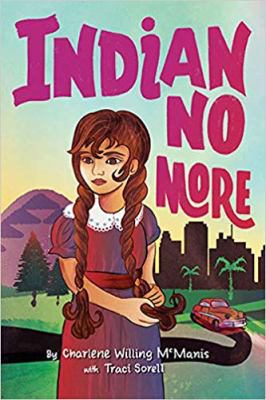Native American Heritage Month: A look at books by indigenous authors
Posted on November 6, 2019 at 6:00 am

BY CAITLIN WHEELER
November is Native American Heritage Month and a great time to learn more about some of the many indigenous groups of North America.
Smithsonian National Museum of the American Indian provides an introduction to indigenous peoples’ portrayals in media after colonialization in Americans, the interactive online exhibit that looks at the influence of settler and indigenous relationships in our history.
You’ll also find resources, exhibits, and research tips at the Library of Congress’s Native American Heritage Month website.
In the U.S., there are 562 Native tribes, and they are as diverse as that number suggests. If you’d like to connect with the people who are native to the state where you live, you can visit the Washington Tribes website and check out their Tribes Map, which is interactive and provides links to each of the individual tribes’ websites. To learn more about the Spokane people’s modern community, visit the Spokane tribe’s website.
Tribal libraries near us include the KalispelTribal Library in Cusick and three Confederated Tribes of Colville Libraries in Inchelium, Nespelem, and Keller. These libraries focus on resources for and about their own tribes, and Native Americans in general, and are open to all visitors.
LOCAL & REGIONAL AUTHORS
You’ll find books by Robert Wynecoop, Sherman Alexie, and Gloria Bird, a few Spokane tribe authors, in the Library District’s collection.
Keep your eye on Emma Noyes, too—a member of the Sinixt band of the Confederated Tribes of the Colville Federation. Emma lives in Spokane, and her book Baby Speaks Salish is forthcoming from Scablands Books.
For a great story that can be enjoyed by the whole family, check out the Confederated Salish and Kootenai Tribes’ collaborative effort Beaver Steals Fire: A Salish Coyote Story.
AUTHORS ACROSS NORTH AMERICA
The past two years saw an influx of great books by indigenous Americans. If you search our catalog by date, you’ll see several new titles by longtime favorite authors Cynthia Leitich Smith and Joseph Bruchac. Be sure to check out author Tommy Orange and his multigenerational novel of memory and identity, There, There, which won several literary awards, including the PEN/Hemingway Award and the American Book Award.
It can be hard to know where to start reading with so many great books to choose from. To help, I’ve put together a list of some of the 2018 and 2019 works I’m most excited by.
There are many terms for the social and tribal groups of indigenous peoples of the Americas, some more outdated than others. In the summaries below, I have attempted to use the terms used in the books by the authors. In cases where it did not seem to interfere with the representation of the written work, I defaulted to “indigenous” or, if possible, “indigenous peoples of the Americas.”
ADULT FICTION
Guardian Angels & Other Monsters: Stories
By Daniel H. Wilson of the Cherokee Nation
Wilson makes it clear in these short stories that not only have indigenous peoples not died out, they are at the forefront of modernity. Atmospheric apocalypses, mail-carrying robots, teleportation ethics, and heroic AIs haunt these pages, but the stories are more than just a fun, futuristic romp. Wilson’s writing is sharp, stirring, humorous, harrowing, and insightful. Science fiction lovers will not want to miss this collection.
By Toni Jensen of the Métis
The characters in this interconnected collection of short stories are just as modern as those in Guardian Angels. But instead of inhabiting the future, Jensen focuses on the present day realities of indigenous peoples living off the reservation. A feeling of diaspora permeates many of these stories. Her characters, though displaced, still manage to find meaning in their past, present, and future, and in their relationships to each other.
Jensen also has a memoir in essays, Carry, forthcoming in 2020.
By Waubgeshig Rice of the Wasauksing First Nation (Anishinaabe)
In this ominous tale, an Anishinaabe community in an isolated region of northern Canada faces post-apocalyptic survival as their power, and the communication with the outside world that it brings, goes mysteriously out. “Our world isn’t ending,” proclaims Auntie Aileen, a community elder. “It already ended [when]… they made us come all the way up here.” But if the ancestors of this community survived that apocalypse, Auntie Aileen maintains that her living community will, too. Quiet, gripping, and evocative, this novel will leave readers reflecting on the choices that have made history and the choices for the future.
ADULT NONFICTION
Bitterroot: A Salish Memoir of Transracial Adoption
By Susan Devan Harness of the Confederation Salish and Kootenai Tribes
Bitterroot explores Harness’s relationship with her racial, social, and familial identity as a Salish child adopted by white parents. When she asks what happened to her Salish biological parents, her white adoptive father tells her they died in an accident. Spoilers: they’re alive. As Harness navigates the questions of home and belonging that her transracial identity raises, she begins to start conversations with her family and with other adoptees. These conversations build an oral history and a theme of self-acceptance that Harness shares with the reader.
By Terese Marie Mailhot of the Seabird Island Band (Sto:lo People, First Nations)
Heart Berries acknowledges the slipperiness of memory as it dives into poetic, intimate retrospection on Mailhot’s murdered mother, her father’s relationship to drink and art, her own mental illnesses, her teen marriage, and the relationship Mailhot found between trauma and shame as she came of age on the Seabird Island Indian Reservation in British Columbia. The evocative, experimental language manages to maintain dignity even as it exposes raw wounds. Deceptively slim, this memoir is likely to be a slow, ruminative read.
By David Treuer of the Ojibwe (Anishinaabe)
Treuer studies the reemergence of Native Americans as empowered since the 1890 massacre at Wounded Knee that cemented an American cultural stereotype of American Indians as a people of the past. Using his own experiences as well as the wider Native experience, Treuer discusses the unification of Native peoples across the United States in the aftermath of land seizures and legal battles, the forced assimilations that occurred at Indian Residential Schools, which mandatorily enrolled indigenous children living on reservations from approximately 1790 until the closure of the last school 1973, the conscription of Native men in the U.S. military, and the pull of urban life and modernization. Treuer presents a counter-narrative of how the indigenous peoples of America came together to recapture and reinvent their identity since the Wounded Knee massacre.
By Joy Harjo of the Mvskoke (Creek) Nation
This memoir by the United States poet laureate Joy Harjo offers a rousing illustration of the power of imagination as a place of solace amidst trauma. Harjo shares her spiritual and creative journeys as she discusses the rape, domestic violence, and alcoholism that haunted her youth and young adulthood. Harjo moved from an abusive home to an abusive marriage, but she eventually broke the cycle, offering a safe house for Native victims of domestic violence. Her memoir—like her poetry—educates, captivates, and convicts.
CHILDREN’S BOOKS
By Brittany Luby of the Anishinaabe-kwe, atik totem, and illustrated by Michaela Goade of the Tlingit (Alaska Native)
This gorgeously illustrated picture book is based on the true story of a Standaconan fisher and the French explorer Jacques Cartier. The characters consider what is different between them, while the Arctic animals observe all that is the same. The back matter of the book discusses the source material and places the peaceful, playful encounter in the historical context of the French colonialism that was soon to come.
By Traci Sorell of the Cherokee Nation, and illustrated by Weshoyot Alvitre of the Tongva (Los Angeles Basin)
A Cherokee grandmother weaves in a cabin at the foot of a mountain, and her weaving folds out into a domestic scene of a family coming together to sing and meditate over their loved ones. The family fears for one member in particular: a woman serving as a pilot in the military. Alvitre’s clean, evocative watercolor and ink illustrations shine through with familial love and hope. At the end of the book, Sorell includes an author’s note discussing the indigenous World War II pilot, Ola Mildred Rexroat, who inspired the story, along with other indigenous U.S. military service members like her.
Fry Bread: A Native American Family Story
By Kevin Noble Maillard of the Seminole Nation, Mekusukey band, and illustrated by Juana Martinez-Neal, Peruvian American
This warm, comfortable picture book shares a Native American family tradition: fry bread. The characters are wide ranging in appearance, with skin both light and dark, with hair that’s brown and sleek, corn-rowed and curly, and even blonde and stick-straight. The diversity is illustrated further on one spread of pages that reads “Fry bread is a nation.” In this illustration, adults point out to their children the names of their Native Nations among hundreds written on a wall that spans two full pages. Indigenous families can enjoy finding their own nation’s name written here.
At end of the book, Maillard includes an eight-page author’s note with footnotes, discussing the history, meaning, and even nutritional significance of fry bread. Even readers who are very familiar with this traditional food and its origin may come away with a new nuanced understanding.
By Charlene Willing McManis of the Confederated Tribes of Grand Ronde (Umpqua) with Traci Sorell of the Cherokee Nation
In this middle-grade historical novel, Charlene Willing McManis shares a history I had never heard of but which was all too familiar to families like McManis’s in the 1950s: the U.S. Indian termination policy. Regina Petit, a 10-year-old member of the Umqua tribe in Grand Ronde, Oregon, lives a happy life on the reservation where she knows only other Umqua Indians—until congress passes the Western Oregon Indian Termination Act, which no longer recognizes a tie between the federal government and the tribes of western Oregon, rendering the people of those tribes “Indians no more.” Regina and her family are uprooted and removed to Los Angeles, where they must find their place in a whole new culture, which is not always friendly to their own. Readers are invited to join Regina as an individual unrecognized by the government that rules the land she lives on.
Charlene Willing McManis developed cancer in the late stages of writing this book. She asked Traci Sorell, a member of the Cherokee Nation and a recognized author in her own right, to finish her work. You’ll find Traci’s insightful thoughts on sharing the story of a Nation other than her own at the end of the novel.
Indigenous artists are creating new, often groundbreaking work all the time. There are many stories and histories to read. I encourage you to check out the work of these favorite authors: Louise Erdrich, Clarissa Pinkola Estes, Melanie Florence, Eric Gansworth, Leslie Marmon Silko, Tim Tingle, and James Welch. For children’s books, you can also head over to Debbie Reese’s excellent page, American Indians in Children’s Literature.
Have a favorite book or author that wasn’t mentioned here? Or know of local resources I didn’t share? Share it in the comments!

Tags: #NationalAmericanIndianHeritageMonth, Americans, author, books, children, fiction, indigenous, native, Native American, nonfiction, writer


